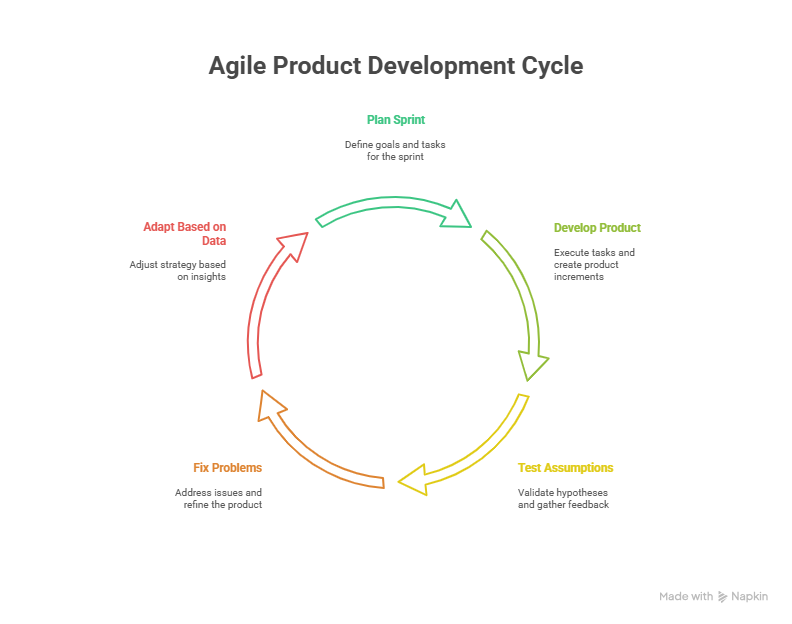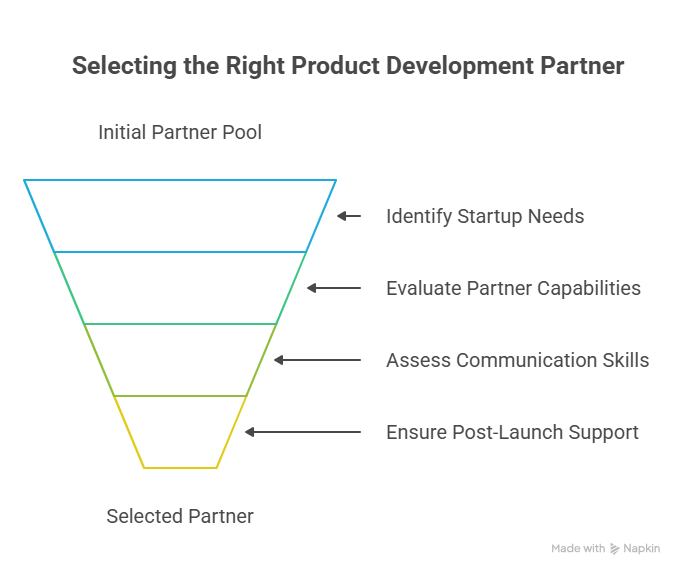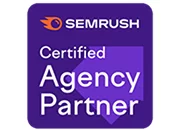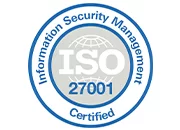Successful tech startups don’t rely on luck; they rely on well-defined product development strategies to turn ideas into real, working solutions. Whether it’s building an MVP, scaling a feature, or responding to user feedback, the process is never random. Every decision is backed by a strategy designed to reduce risk and increase speed to market.
If you’re a founder or product lead, knowing which approach to use, and when, can make the difference between progress and wasted effort.
In this blog, I’ll break down 7 product development strategies that leading tech startups rely on, and how you can adapt them to your own growth stage.
Top Product Development Strategies Used by Leading Tech Startups
So what are the actual strategies that help top startups launch faster, avoid waste, and build products users love?
Below are seven product development strategies I’ve seen work consistently, whether you’re building your first MVP or iterating on a growing platform.
Each one focuses on clarity, speed, and reducing risk, the things that matter most when you’re building under pressure.
1. Start with a Problem-First Mindset
One of the most overlooked but powerful product development strategies is starting with the problem, not the solution. Successful startups don’t build features just because they can. They start by identifying a real, specific user problem worth solving.
This approach makes every product decision intentional. It also ensures your team avoids unnecessary complexity early on. Without a well-defined problem, your entire product development process risks going off course.
2. Build a Lean MVP Before Scaling
Most tech startups today begin with a minimum viable product. It’s a core tactic in modern software product development , launch fast, learn quickly, and improve based on actual user feedback.
A lean MVP helps reduce risk, control costs, and validate product-market fit. It’s not about launching something incomplete; it’s about building just enough to measure real interest and gather useful insights.
3. Use Agile Product Development Strategies

Agile is more than a methodology. It’s one of the most valuable product development strategies startups can adopt. Instead of long cycles and heavy specs, agile teams work in short sprints, release often, and stay open to change.
This lets you test assumptions quickly, fix problems early, and adapt based on data rather than guesswork. For startups operating under tight timelines and limited budgets, agile product development is often the most sustainable path to growth.
4. Prioritize Continuous User Feedback
Top startups don’t wait until launch to hear from users. They build feedback into every stage of development, from design prototypes to early releases.
This is where great product development services stand out. They create room for feedback loops that improve usability, validate features, and reduce the cost of rework. Whether it’s through beta programs, user interviews, or analytics tools, the goal is the same: build what users actually want.
5. Work with Cross-Functional Teams
Successful software products aren’t built in silos. The best startups bring together designers, developers, and product leads from the start. This cross-functional approach allows for faster decisions, better user experiences, and fewer disconnects.
This is also why working with the right custom software development company matters; one that doesn’t just code, but collaborates with you on design, UX, and business logic.
6. Validate Early and Often
Validation is not a one-time step. Leading startups test their assumptions constantly, whether it’s through landing pages, smoke tests, click-through prototypes, or user behavior tracking.
This practice helps teams avoid building features nobody uses. It’s a core part of agile product development strategies, especially when you’re still finding product-market fit. Validation keeps your team honest, and aligned with what users really value.
7. Choose Product Development Services That Scale with You

The partner you choose for your product build can either accelerate growth or slow you down. Startups that scale successfully often work with product development services designed specifically for fast-moving teams, ones that understand startup constraints and provide flexible delivery models.
You want a team that brings more than engineering; one that thinks like a product team, ships fast, communicates clearly, and supports you post-launch.
Common Mistakes Startups Make in Product Development
Even the most promising startup ideas can fall apart during execution, and often, it comes down to avoidable mistakes. Knowing what not to do is just as important as having the right product development strategies in place.
Here are some of the most common missteps founders make:
- Building too many features too soon
Instead of focusing on the core problem, startups often try to do everything at once. This stretches timelines, increases complexity, and delays feedback from real users. - Skipping user validation
Teams assume they know what users want, and skip testing ideas early. Without feedback, they risk investing months into features that no one uses. - Ignoring scalability in early architecture
While MVPs should be lean, they shouldn’t be disposable. Rushed or poorly structured code makes it hard to scale or iterate later. - Lack of cross-functional collaboration
Siloed communication between product, design, and development teams leads to rework, misalignment, and friction during execution. - No clear development roadmap
Without a well-defined plan, it’s easy to lose direction. Startups that don’t use structured product development services often end up reacting to issues rather than anticipating them. - Not setting success metrics
If you’re not tracking key metrics, you can’t measure progress. This makes it harder to justify future investment, and harder to know if your product is even working.
Avoiding these mistakes doesn’t guarantee success, but it does give your team the clarity and space needed to move with confidence and speed.
Build Smarter with Product Development Strategies That Work
Product development isn’t just about speed; it’s about direction. The most successful startups don’t build more, they build with intent. They use data, feedback, and strategy to move fast without wasting time or resources.
At WildnetEdge, we help startups turn raw ideas into working products with the right mix of strategy, execution, and agility. Whether you need a lean MVP, a full-scale product build, or an expert team to guide you from idea to launch, our product development services are built for fast-moving teams like yours.
Reach out to explore how our product development team can help you scale smarter, and faster.
Frequently Asked Questions
1. What are product development strategies?
Product development strategies are structured approaches used to guide the planning, design, development, and launch of a new product. For startups, these strategies often involve lean MVPs, agile development, and continuous user validation.
2. Why are product development strategies important for startups?
Without a clear strategy, startups risk building products no one needs. Effective strategies help teams stay focused, test assumptions early, reduce rework, and bring better products to market faster.
3. How is software product development different from general product development?
Software product development focuses specifically on digital solutions, like web or mobile applications. It involves unique stages such as UI/UX design, coding, testing, and deployment, all of which require technical expertise and iterative workflows.
4. When should a startup consider working with a product development services company?
If your team lacks in-house technical capacity or needs to move quickly, a product development company can help you go from idea to launch faster. The right partner can offer everything from MVP planning to post-launch support.
5. Can I use agile and still follow a defined product development strategy?
Yes. Agile is a framework for how you build, but it still fits within a broader strategy. In fact, agile works best when it’s tied to a clear roadmap, user goals, and defined business outcomes.

Nitin Agarwal is a veteran in custom software development. He is fascinated by how software can turn ideas into real-world solutions. With extensive experience designing scalable and efficient systems, he focuses on creating software that delivers tangible results. Nitin enjoys exploring emerging technologies, taking on challenging projects, and mentoring teams to bring ideas to life. He believes that good software is not just about code; it’s about understanding problems and creating value for users. For him, great software combines thoughtful design, clever engineering, and a clear understanding of the problems it’s meant to solve.
 sales@wildnetedge.com
sales@wildnetedge.com +1 (212) 901 8616
+1 (212) 901 8616 +1 (437) 225-7733
+1 (437) 225-7733















 ChatGPT Development & Enablement
ChatGPT Development & Enablement Hire AI & ChatGPT Experts
Hire AI & ChatGPT Experts ChatGPT Apps by Industry
ChatGPT Apps by Industry ChatGPT Blog
ChatGPT Blog ChatGPT Case study
ChatGPT Case study AI Development Services
AI Development Services Industry AI Solutions
Industry AI Solutions AI Consulting & Research
AI Consulting & Research Automation & Intelligence
Automation & Intelligence















